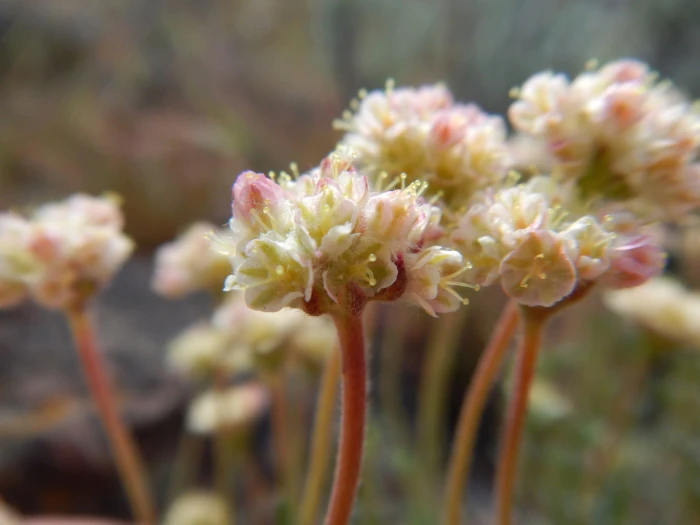Thymeleaf Wild Buckwheat
(Eriogonum thymoides)
Thymeleaf Wild Buckwheat (Eriogonum thymoides)
/
/

Matt Lavin
CC BY 4.0
Image By:
Matt Lavin
Recorded By:
Copyright:
CC BY 4.0
Copyright Notice:
Photo by: Matt Lavin | License Type: CC BY 4.0 | License URL: http://creativecommons.org/licenses/by/4.0/ | Rights Holder: Matt Lavin | Publisher: iNaturalist | Date Created: 2015-04-04T23:40:24-07:00 |

























Estimated Native Range
Climate Requirements for Dakar, Senegal
| This Plant | Your Site | Plant Suitability for Your Location | ||
|---|---|---|---|---|
| • Precipitation | 6" - 90" | 16" | Your precipitation may be too high for this plant. | Too high |
| • High Temp. | 65°F - 93°F | 89°F | Your summer temperatures are normal for this plant. | Excellent |
| • Low Temp. | 6°F - 34°F | 61°F | OK, but your winter temperatures are warmer than normal for this plant | OK |
This plant may not grow well at your location - your precipitation is too high.
Summary
Eriogonum thymoides, commonly known as thymeleaf wild buckwheat, is a perennial subshrub native to the arid and semi-arid regions of the Pacific Northwest, specifically Idaho, Oregon, and Washington. It typically grows to a height of 6 inches and can spread up to 16 inches wide. This plant is well-adapted to its native habitat, which includes sagebrush steppe, ponderosa pine forest openings, and mountain ridges, often found on shallow, rocky soils derived from basalt and other volcanic materials.
Thymeleaf wild buckwheat has a distinctive appearance with intricately branched foliage that is covered in short woolly or silky hairs, giving it a grayish-green hue. From late spring to early summer, it produces erect flowering stems that rise above the foliage, showcasing clusters of small, variable-colored flowers in shades of yellow, white, and rosy red. The flowers are particularly showy and attract a variety of pollinators. In cultivation, Eriogonum thymoides is valued for its drought tolerance, low maintenance requirements, and its ability to thrive in poor, well-drained soils. It is often used in rock gardens, xeriscaping, and native plant landscapes. Full sun is ideal for this plant, and it requires minimal supplemental watering once established. While generally free of serious pests and diseases, overwatering or poor drainage can lead to root rot.CC BY-SA 4.0
Thymeleaf wild buckwheat has a distinctive appearance with intricately branched foliage that is covered in short woolly or silky hairs, giving it a grayish-green hue. From late spring to early summer, it produces erect flowering stems that rise above the foliage, showcasing clusters of small, variable-colored flowers in shades of yellow, white, and rosy red. The flowers are particularly showy and attract a variety of pollinators. In cultivation, Eriogonum thymoides is valued for its drought tolerance, low maintenance requirements, and its ability to thrive in poor, well-drained soils. It is often used in rock gardens, xeriscaping, and native plant landscapes. Full sun is ideal for this plant, and it requires minimal supplemental watering once established. While generally free of serious pests and diseases, overwatering or poor drainage can lead to root rot.CC BY-SA 4.0
Plant Description
- Plant Type: Shrub, Herb
- Height: 0.5-0.75 feet
- Width: 1-1.75 feet
- Growth Rate: Slow
- Flower Color: Pink, White, Yellow
- Flowering Season: Spring, Summer
- Leaf Retention: Deciduous, Semi-deciduous
Growth Requirements
- Sun: Full Sun, Part Shade
- Water: Low
- Drainage: Fast, Medium
Common Uses
Drought Tolerant, Low Maintenance, Rock Garden, Showy Flowers
Natural Habitat
Native to sagebrush steppe, ponderosa pine forest openings, and mountain ridges, often on shallow, rocky volcanic soils
Other Names
Common Names: Thyme Buckwheat, Thyme-Leaf Wild Buckwheat
Scientific Names: Eriogonum thymoides, Eriogonum minimum, Eriogonum sphaerocephalum subsp. minimum, Eriogonum sphaerocephalum var. minimum, Eriogonum thymoides subsp. congestum, Eriogonum thymoides subsp. typicum, Eriogonum thymoides var. pallens
GBIF Accepted Name: Eriogonum thymoides